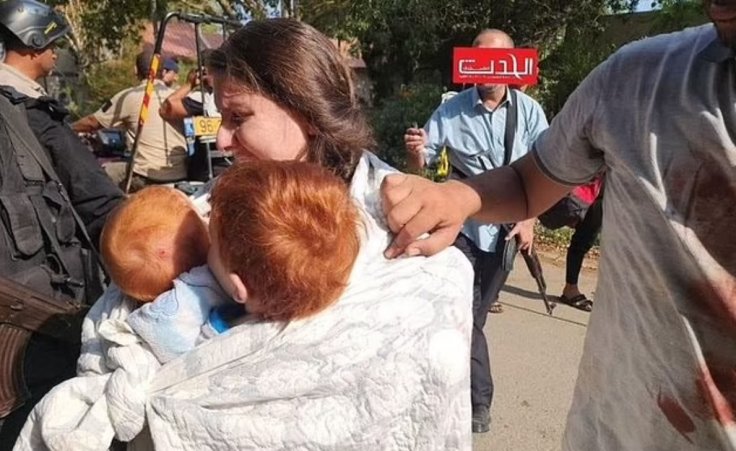Israel has rejected Hamas' claim that a body returned under a ceasefire agreement was that of Shiri Bibas, a young mother kidnapped in October 2023. The Israeli military confirmed that forensic analysis proved the remains did not belong to her.
Shiri Bibas, 33, was taken hostage with her two sons, Ariel, 4, and Kfir, who was only nine months old at the time. Their striking red hair became a heartbreaking symbol in Israel. Their father, Yarden Bibas, was also captured but was later freed on February 1.

The Israel Defense Forces (IDF) confirmed that the bodies of Ariel and Kfir Bibas had been returned. However, they stated that another body handed over by Hamas did not match any known hostage.
"During the identification process, it was determined that the additional body received is not that of Shiri Bibas, and no match was found for any other hostage," the IDF said in a statement posted on X late Thursday. "This is an anonymous, unidentified body."
Israeli authorities revealed that intelligence reports and forensic evidence confirmed that Ariel and Kfir Bibas were murdered by Hamas terrorists while in captivity in November 2023. The military demanded the immediate return of Shiri Bibas and all remaining hostages.
The Bibas family and another hostage, Oded Lifshitz, were taken from Kibbutz Nir Oz. The small farming community near Gaza suffered heavy losses during the Hamas attack, with a quarter of its 400 residents killed or abducted. The statement from the IDF did not mention whether Lifshitz's remains were among those returned.
The exchange took place as negotiations for a second phase of the ceasefire are set to begin. The talks aim to turn the current six-week pause in fighting into a more permanent halt. However, deep divisions remain between the warring sides.
Israel insists that Hamas must be removed from power and fully demilitarized. The Palestinian militant group, designated a terrorist organization by the United States and other countries, has signaled willingness to give up governance of Gaza but refuses to disarm.
If the talks fail, the conflict could reignite, leading to further deaths in Gaza and endangering the lives of remaining hostages.
First Handover of Deceased Hostages in a Deal
This was the first time that deceased hostages were returned as part of negotiations. In previous instances, Israeli forces recovered remains through military operations inside Gaza.
The handover took place in Khan Younis, a city in southern Gaza. Hamas staged the event in front of a billboard that portrayed Israeli Prime Minister Benjamin Netanyahu with demonic imagery, along with claims that Israeli airstrikes had killed the returned hostages.
Israel has repeatedly accused Hamas of using hostages as bargaining chips and of obstructing humanitarian efforts. The militant group has refused to disclose information on the remaining hostages, further complicating negotiations.
The Bibas family's plight has drawn significant international attention. The images of Ariel and Kfir, particularly their red hair, became powerful symbols of the hostage crisis. Their tragic deaths, confirmed months after their abduction, have fueled calls within Israel for continued military action against Hamas.
With ceasefire negotiations hanging in the balance, the fate of Shiri Bibas and other captives remains uncertain. Israeli officials say they will not stop until all hostages are safely returned home.









